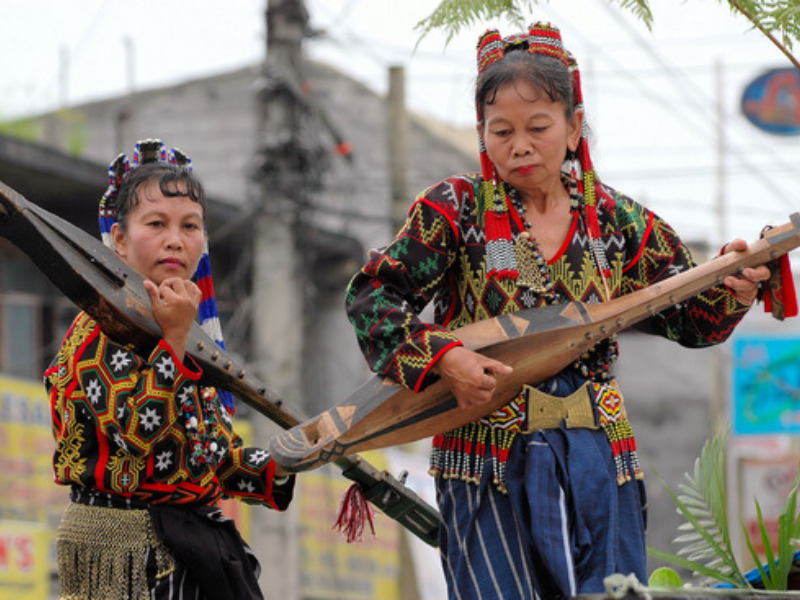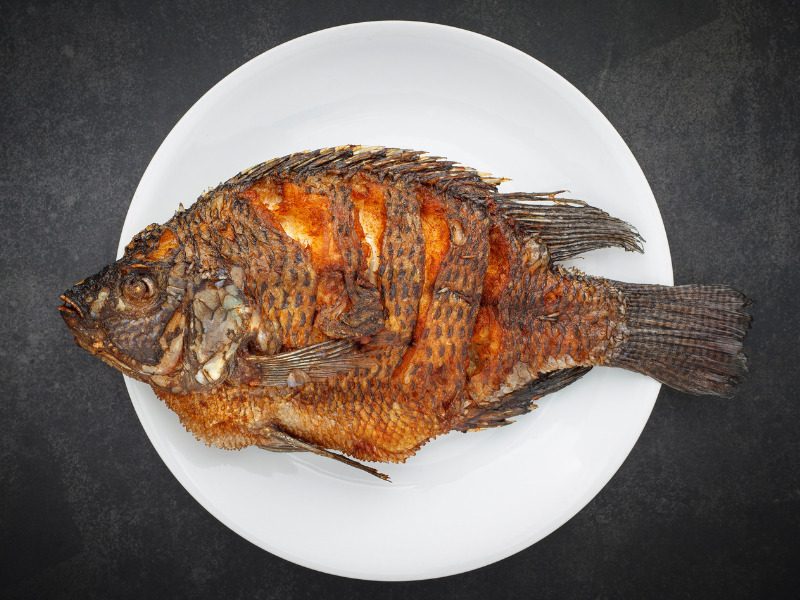Lemlunay (also known as the T’boli Tribal Festival) is more than just a festival― it celebrates the T’Boli tribe’s essence.
From enchanting melodies to the pathways shimmering with hues and movements weaving ancient narratives, Lemlunay offers a visual and historical spectacle.
But what exactly happens during Lemlunay? What does it mean? When is it celebrated?
In this article, we’ll talk about everything you need to know about Lemlunay.
What Is Lemlunay?
Lemlunay stands as a radiant tribute to the T’Boli tribe’s cultural essence. During the T’boli Tribal Festival, the T’Boli community unites to weave a vivid portrayal of their lineage.
Just a heads up: the atmosphere is electric, so you might want to bring your A-game. The event spotlights the tribe’s distinct musical tunes, enchanting dances, and age-old crafts. Elders and younger generations also come forward, enacting time-honored rituals and sharing tales of forefathers and their deep bond with the environment.
In addition, Lemlunay serves as a conduit to revere their gods, ancestral spirits, and the intricate web of traditions handed down over generations.
When Is Lemlunay Celebrated?
Lemlunay is a yearly celebration held every third week of September. However, the T’boli tribe didn’t pick this month by chance.
For the T’Boli tribe, September signifies a transition from the wet season to the harvest season. The festival’s lively events align with this natural abundance, seamlessly merging tribal festivities with the beauty of nature. Both tribe members and visitors mark their calendars, as it’s one of the region’s most awaited occasions.
Where Is Lemlunay Celebrated?
Lemlunay takes place in the scenic region of South Cotabato, specifically by the calm waters of Lake Sebu. Just like the date, the T’boli tribe didn’t just choose the location by chance.
For the T’boli tribe, Lake Sebu signifies their legacy and plays a huge role in their daily lives. Encompassed by gentle hills and dense green woodlands, Lake Sebu has been home to the tribe for countless ages.
Its peaceful waters and nature’s melodies set an idyllic scene for the festival. Throughout time, Lake Sebu offered nourishment to the T’Boli community. It also inspired their artistry, melodies, and dance movements.
T’Boli Tribe History

Set in the scenic heights of South Cotabato, the T’Boli tribe’s history stretches back beyond the Philippines’ earliest known chronicles. These indigenous people, originally tied to the Earth and its waters, built their homes near Lake Sebu, South Cotabato.
In a dance with nature, the T’boli tribe’s lifestyle evolved. Activities like fishing, farming, and hunting went beyond just survival. These activities became sacred acts that connected the T’boli tribe to the Earth and the universe.
Over time, the T’Boli became narrators, creators, and visionaries. Their spoken legacies, relayed over generations, recount tales of brave warriors, celestial beings, and grand conflicts. They also taught ethics, compassion, and the divine.
Central to their cultural legacy is the creation of the T’nalak fabric. Rooted in dream-inspired designs, making it became a revered art. The tribe then taught it over generations, where every design narrates a tale or message.
As time passed and their surroundings transformed, the T’Boli remained committed to their age-old customs. Yet, they were not closed off to evolution.
Embracing change while preserving their customs, they continued their traditions, including Lemlunay or the T’boli Tribal Festival.
Lemlunay Meaning
For the T’boli tribe, lemlunay refers to the good place one goes to in the afterlife. As a result, the T’boli Tribal Festival also embodies the tribe’s belief that they’ll experience a golden age after they die.
Lemlunay also refers to the paradise the T’boli would like to create for their people. As a result, the T’boli tribe renews their vow to work for this paradise during the festival.
Lemlunay Festival History
Going back into the chronicles of T’Boli lore, Lemlunay began not as the prominent event we know now.
It was originally just a small-town fiesta that celebrated the feast day of Sta. Cruz. During the 1970s, the religious feast started to embrace the mo-inum or the thanksgiving ritual of the T’boli tribe.
Over time, the festival included a Catholic practice― a dedicatory mass held on the last day. Interestingly, this made Lemlunay a blend of Catholic customs and ethnic practices. However, the ethic practices still matter more to the festival than its Catholic feature.
Fast forward to the present, Lemlunay or the T’boli Tribal Festival is now a full-scale cultural festival that brings the six major tribes in South Cotabato together. These tribes include the T’Boli, Manobo, Ubo, Kalangan, Tasaday, and Maguindanao. In the past few years, the event also welcomed and honored tribal representatives from nearby provinces.
Lemlunay Festival Costume

The attire showcased during the Lemlunay Festival or T’boli Tribal Festival embodies the essence, history, and artistic flair of the T’Boli people. These garments reflect the tales of the tribe’s ancestral journeys, spiritual beliefs, and connection to the environment.
Each element of the ensemble is intricately designed. Many outfits feature the renowned T’nalak cloth, a revered textile brought to life by T’Boli women. Every motif on the T’nalak unfolds a tale, often inspired by the dream visions of its creators. With detailed patterns achieved through an organic tie-dye method, people believe that Fu Dalu, the guardian spirit of the abaca plant, blesses these designs.
Complementing the T’nalak are elaborate bead patterns woven with remarkable accuracy. These beads symbolize one’s accomplishments or ancestral ties within the community.
In addition, brass embellishments (from belts to neck pieces and anklets) create a musical chime with the wearer’s every step. Made using traditional methods, these brass creations also serve as talismans that attract prosperity.
Feathered crowns and ornamental headpieces also stand out. Made using vibrant feathers, beads, and, occasionally, animal remnants, they reflect the tribe’s awe of nature and its inhabitants.
Delicacies You Shouldn’t Miss In South Cotabato
While attending the T’boli Tribal Festival in South Cotabato, the dynamic culture and food will mesmerize you. Here are ten delectable dishes you shouldn’t miss:
1. Sinaglay na Sebu Tilapia

Native to the tranquil waters of Lake Sebu, this fish stands as a culinary marvel in its own right. Fed by the pure, mineral-rich waters, the Sebu Tilapia has an unmatched, nuanced flavor.
Sinaglay refers to the South Cotabato cooking method where locals wrap the tilapia in cabbage and cook it in coconut milk.
2. Native Chicken Adobo

This dish is not your ordinary adobo. We’re not saying that adobo is ordinary, but you get the idea.
Anyway, the chicken used in South Cotabato’s specialty has a different flavor profile. It’s because native chickens don’t eat feed and can roam freely. Their meat is also a little more chewy and flavorful than the commercial ones.
3. Nilagang Tilapia

Across various regions, nilagang tilapia holds a special place in the culinary hearts of many. This uncomplicated dish focuses on a clean and fragrant broth in which the cooks poach the tilapia. Specifically, cooks poach the dish with staples like radish, eggplant, and string beans. In some cases, they add tomatoes.
The vegetables and fish contribute to the subtly sweet soup base as they simmer. The fish, tender from the slow cooking, also complements the fresh vegetable flavors. For many, this meal brings back fond memories of family dinners, made complete with a side of spicy fish sauce for that added kick.
4. Nilasing na Tilapia

Building on the age-old practice of using spirits in cooking, nilasing na tilapia presents an intriguing flavor profile. Here, tilapia takes a dip in locally preferred spirits such as gin or the traditional tuba. As a result, the tilapia gets a unique taste and texture.
The marinade often includes companions like garlic, pepper, and sometimes the zesty calamansi. After marinating, it’s time for the fish to be fried to a crisp golden-brown perfection. The outcome? A delightful crunch on the outside but juicy on the inside, best paired with tangy vinegar with garlic, onions, and chili.
5. Da-un Bekoyo

Showcasing local ingredients, da-un bekoyo uses the often-overlooked cassava leaf. Cooks prepare this dish by rigorously boiling the leaves. This process eliminates the leaves’ inherent bitterness and harmful substances.
Next, local cooks fry the leaves with staples like garlic and onions. To elevate its texture and flavor, they add coconut milk. Doing this gives the dish its characteristic creamy consistency.
Depending on local preferences, cooks might add shrimp paste or ground meat. The result? A smooth and hearty stew that pairs seamlessly with grilled entrees or a bowl of white rice.
6. Ginataang Kuhol

Originating from places where freshwater is plentiful, ginataang kuhol combines freshwater snails and creamy coconut milk. Cleaning the snails is a meticulous task, but local cooks are up to it.
They then simmer the kuhol in a pot of coconut milk, enhanced with a selection of native spices, garlic, onions, and a hint of chili. This concoction creates a creamy and flavorful sauce that beautifully complements the tender snails, best paired with freshly steamed rice.
7. Chicharon Tilapia

Presenting tilapia in an unexpected way― chicharon. This dish transforms the fish from its usual form. Cooks descale the fish, cut it into thin portions, and season it with regional spices.
Next, cooks deep fry the tilapia to create a texture akin to the classic pork chicharon. Paired with tangy vinegar or local citrus dips, you can find this flavor-packed choice at many local pasalubong restaurants.
8. Kinilaw na Tilapia

A showcase of local culinary creativity, kinilaw na tilapia highlights the pristine quality of the region’s catch. Cooks carefully slice the fish and soak it in vinegar and native citrus.
This method, reminiscent of ceviche, naturally cooks the fish without heat. Cooks add ingredients like cucumber, chili, and various spices to enhance its taste. With its refreshing tang, you can enjoy this dish as an appetizer, best paired with a cold beverage.
9. Sinabawang Palaka

This dish pays homage to the country’s rich biodiversity: frogs. To make this dish, cooks carefully clean and stew frogs with regional herbs, ginger, and native greens like water spinach (kangkong) and string beans (sitaw).
This process also produces clear and fragrant soup. It complements the frog’s tender meat, reminiscent of chicken but distinct in its own right. Perfect for chilly days, this heartwarming dish is unique and delicious.
10. Nilupak na Saging

Want a sweet delight in South Cotabato during the T’boli Tribal Festival? Nilupak na saging got your back.
This dessert features bananas mashed and blended with coconut milk and sugar. Some versions may include butter or margarine on top. Cooks then pound the banana to a smooth consistency using a traditional wood tool.
Frequently Asked Questions
The Lemlunay Festival is about the T’boli tribe― their history, customs, and resilience. The festival also brings the six major tribes in South Cotabato together. These tribes include the T’Boli, Manobo, Ubo, Kalangan, Tasaday, and Maguindanao.
The festival of Tboli is called Lemlunay. Lemlunay refers to the good afterlife. As a result, the festival also embodies the tribe’s belief that they’ll go to a good place after they die.
The T’boli culture and tradition include sacred activities like fishing, farming, and hunting. These acts connected the T’boli tribe to the Earth and the universe. Over time, the T’Boli became narrators, creators, and visionaries. Their spoken legacies, relayed over generations, recount tales of brave warriors, celestial beings, and grand conflicts. They also taught ethics, compassion, and the divine.
The origin of T’boli is in the mountain slopes of South Cotabato, Mindanao, Philippines. They are of Proto-Malayan descent.
Conclusion
Lemlunay isn’t just a festival. It’s also an intimate journey into the heart of the T’Boli community. From energetic performances to delectable culinary offerings, this event highlights the diverse heritage of the T’Boli people. Should you be in South Cotabato in September, join this enchanting celebration!
About HICAPS
Over the years, HICAPS has helped bakers and businesses make delicious products by offering ingredients like ChiffonAide Cake Oil, Magic Whizk Whipping Cream, Red Velvet Flavor Emulco, and Instabake Brownie Mix.
HICAPS also provides tools and resources to valued partners, such as the free “How to Increase Your Sales Amidst the Pandemic” E-book and free dealer locator that helps look for baking ingredients near me.
Want more free tips and tutorials? Follow us on Facebook at Hicaps Mktg. Corp. and on YouTube at HicapsTV. Want to be one of our valued partners? Fill this form out. Looking forward to talking to you soon!




